Affiliate disclosure: This post may contain affiliate links. Please see our Privacy Policy.
Homestead income ideas are easy to list, but a lot harder to turn into real, repeatable money that actually helps pay the bills. These are the ones that can realistically get you to a thousand dollars a month without eating your whole season alive.
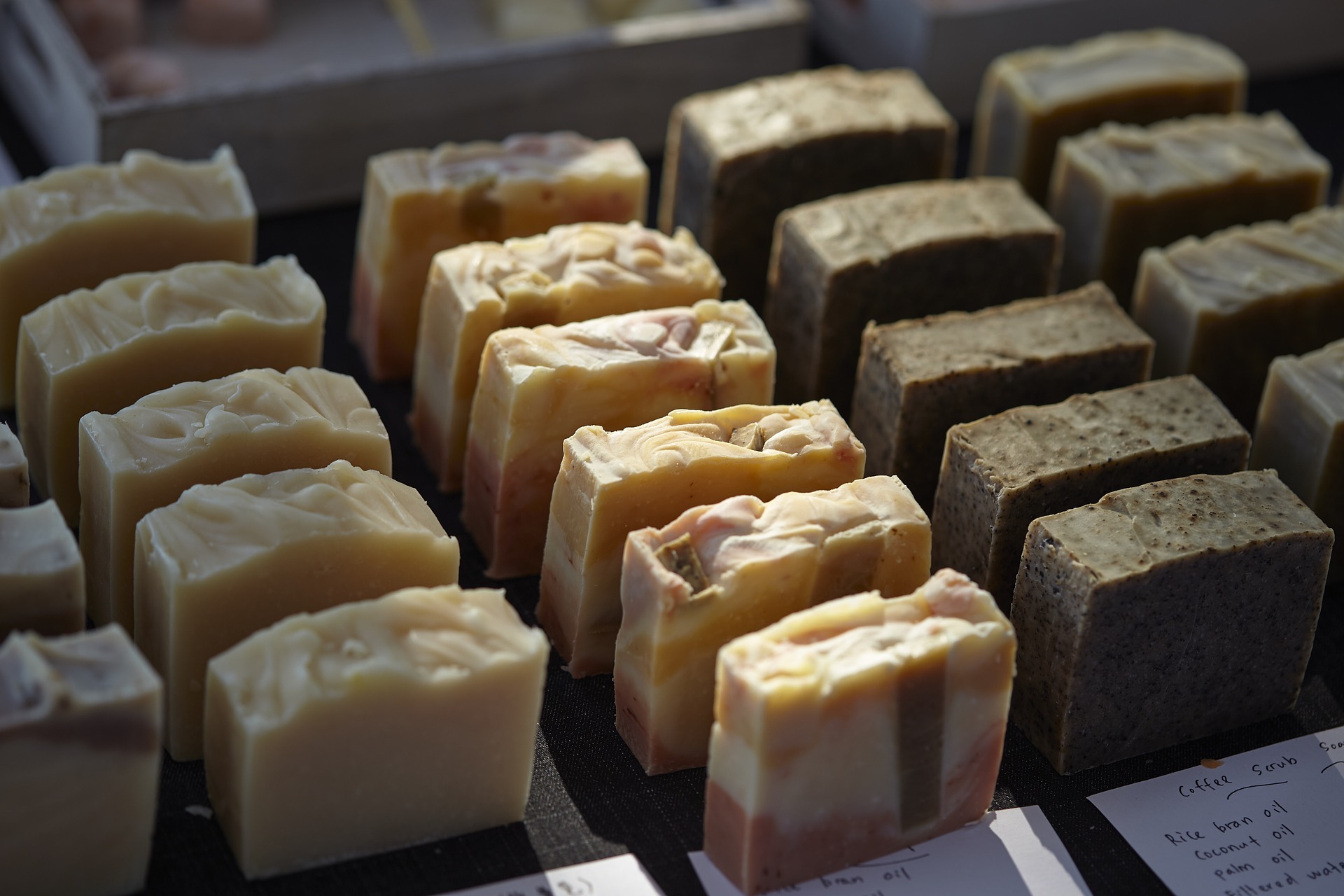
Table of Contents
- Homestead Income Ideas
- Sell Baked Goods at Farmers Markets
- Start a blog
- Sell hatching eggs (instead of regular eggs)
- Start a backyard plant nursery
- Sell homemade Soaps, Salves & Tinctures
- Grow mushrooms
- Sell foraged or wildcrafted edibles and medicinals
- Grow medicinal herbs (and make high-value products)
- Final Thoughts
We’ve all seen those giant “make money homesteading” listicles that read like a laundry list of side hustles. They’re full of ideas that might cover a tank of gas, but not the kind of income that reliably pays bills.
When I talk about making $1,000 a month on a homestead, I mean real, repeatable money. The kind that fits around chores, seasons, and family life instead of replacing it. I also mean income streams that scale in a practical way, because on a homestead you don’t have unlimited time, energy, or daylight.
Below are eight ways I’ve either done myself or watched work well for other homesteaders. Some are seasonal, some are year-round, and a few can grow into full-time income if you want them to.
Homestead Income Ideas
If you want the quick version, these are the eight:
- Sell baked goods at farmers markets
- Start a blog
- Sell hatching eggs
- Run a backyard plant nursery
- Sell homemade soaps and salves
- Grow mushrooms
- Sell foraged or wildcrafted edibles/medicinals
- Grow medicinal herbs (and value-added products)
The main thing here is you’re focusing on maximizing income while minimizing time. That means either making and selling things with a high profit margin, or providing services that are scalable without adding hours to your week.
Sell Baked Goods at Farmers Markets
I’m not talking about church bake sale cupcakes with canned frosting. I’m talking about the kind of baked goods that make people stop at your table because they can tell you used real butter and the raspberries came from somewhere nearby.
The trick to making money with baked goods is planning. You need to know your input costs, how long each item takes to produce, and what your market will actually pay.
Here’s a real example.
A homemade raspberry pie with local raspberries and real butter is delicious, but it’s not particularly profitable. Raspberries are expensive, and even if you pick them yourself, they take time. A proper pie crust uses a lot of butter and takes time to make well. A pie that sells for $12 to $15 can cost $12 to $25 in ingredients, and that’s before you count hours of work.
Now compare that to something designed for profit.
The same amount of ingredients can make a full dozen personal pan pies, sold at about $8 each. We sold personal pan pies made in small pans for a premium, and we always sold out. Market patrons love food they can eat out of hand while walking around. Mini quiche are even better because they’re savory and feel like a real portable meal.
We made them in these small 6 inch tart pans, and they popped right out of the pans for easy packaging.

Brownies are another strong option because they’re fast, forgiving, and a great way to use eggs from backyard hens. A full sheet pan takes minutes to mix and can bring in a surprising amount of net profit, even if you keep the per-piece price reasonable. If you want to stand out, add a local twist, like lavender from your own herb garden.
Other high-margin items that tend to do well: handmade truffles, specialty cupcakes, mulled cider (or fresh pressed cider), lemonade, and coffee.
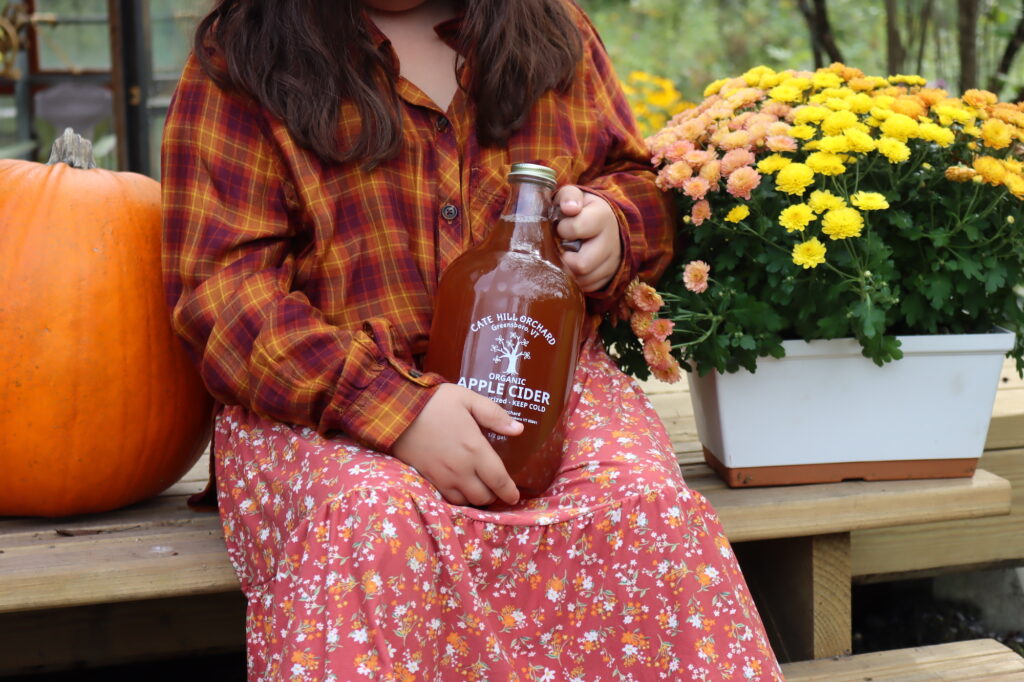
If you have a strong local market, around $500 a week in gross sales is realistic. Subtract expenses, show up four times a month, and you’re in the neighborhood of that $1,000 net goal.
The downside is seasonality and time. The best market sales happen in summer, which is also when I’d rather be outside in the garden than stuck in the kitchen all day.
Even though this side hustle was profitable, I eventually gave it up because I didn’t want to spend one full day a week baking.

Start a blog
If you’re homesteading, you’re living a life many people genuinely want to learn about. I started writing what I was already learning, and within six months of starting my blog, I was making an extra $1,000 a month.
The part that surprises people is that you don’t have to sell your soul or push products you don’t believe in. Most of my best content starts the same way: I’m researching something to satisfy my own curiosity, and then I write it up because I know other people are wondering the exact same thing.
I was inspired to take the leap into blogging when I read the book Make Money Blogging at Any Level by my blogger friend, Victoria at A Modern Homestead. She’s now converted that book into a full course called “How to Build a 6-Figure Blog in 10 Hours a Week (Without Self-Doubt or Guesswork Getting in the Way).” At this point, it’s a start-to-finish guide that takes you step by step from setting up a blog to making a substantial living online.
She was able to retire her husband and support her family with her blog. If you’re considering blogging as a real income stream, it can be worth investing in a start-to-finish roadmap. There’s also a free intro training, which is a helpful way to see if blogging is a good fit for you before you commit.
The honest truth: I wish I’d taken something like that when I started. I spent months learning everything the hard way.
Sell hatching eggs (instead of regular eggs)
A lot of homesteaders try to make extra money by selling eggs. We sold duck eggs to the local food coop, and even at $6 a dozen wholesale, we still lost money.
Feed is expensive, and ducks eat roughly twice as much as chickens to produce an egg. Even with chickens, many small flocks barely break even once you count feed costs and the daily work of tending animals. The eggs might offset grocery bills, but they don’t always pay you for your time.
Hatching eggs are different.
They command a much higher price, and the work doesn’t increase nearly as much. The biggest lever is genetics: people pay for good breeding stock, and they pay even more for rare and desirable breeds.
If you want to make this a reliable income stream, focus on quality, consistent fertility, and clear communication with buyers. The goal isn’t “eggs for sale,” it’s “healthy genetics people can trust.”
If you’d like the details, this is a great article on making money with hatching eggs. They manage to make an extra $1000 a month from their small backyard flock of 15 chickens.
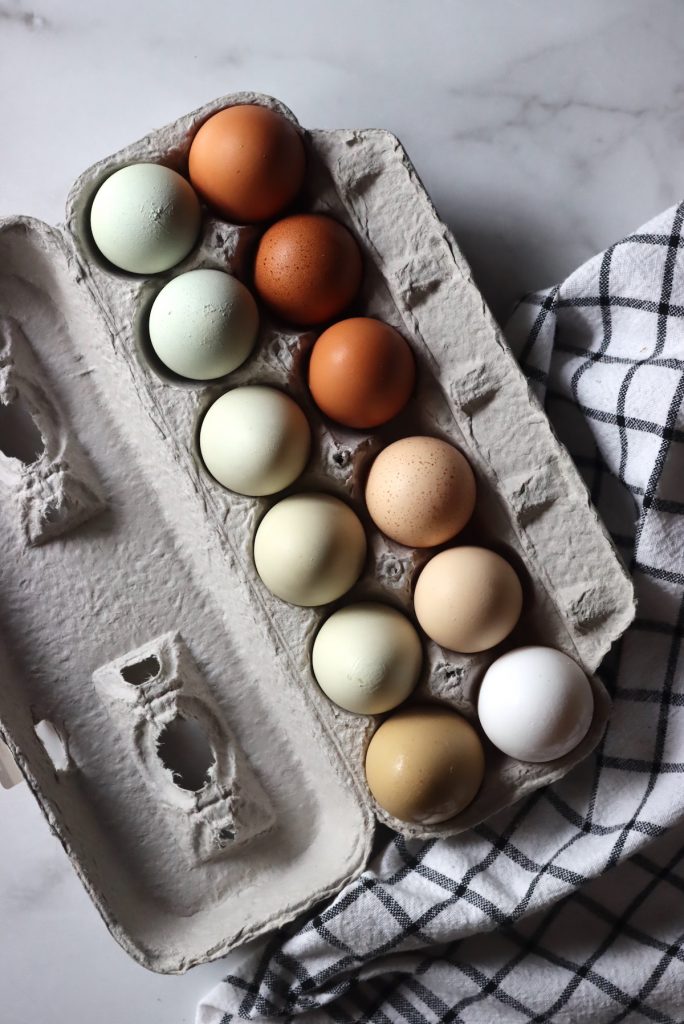
Start a backyard plant nursery
Plant propagation can feel like magic the first time it works, but it’s surprisingly approachable. Propagating grapes, for example, takes a bit of potting soil and rooting hormone, and it uses plant material you’re pruning off anyway.
And it’s not just grapes. Many perennials grow easily from seed and can be divided year after year. Asparagus grows well from seed, and growing rhubarb from seed or strawberries from seed is just as easy. The seeds cost next to nothing, but the plants cost quite a bit to buy.
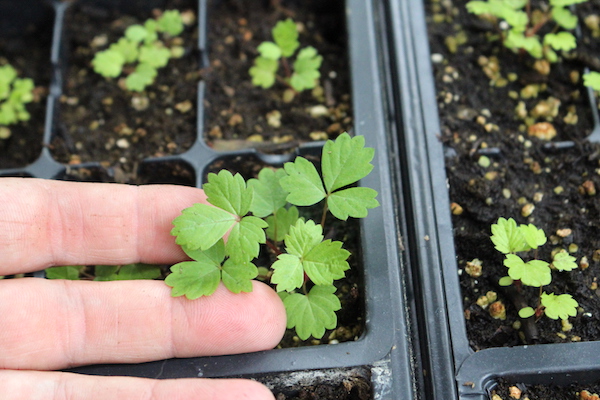
A few well-established garden beds can both beautify your home and keep producing sale-able divisions.
On our local town email list, there’s a constant stream of free plants. People divide perennials, redo landscaping, or remove plantings and just want them gone. The difference between free clumps on the side of the road and perennials that sell for $10+ isn’t magic. It’s planning and packaging.
If you pot divisions, label them clearly, and tend them for a month or two until they’re back in prime form, you’ve transformed “free” into “valuable.”
Fruit trees are another big opportunity. Apples (and most fruit trees) need to be grafted to stay true to variety. (Yes, You can grow apples from seed, but you never know what you’re going to get.)
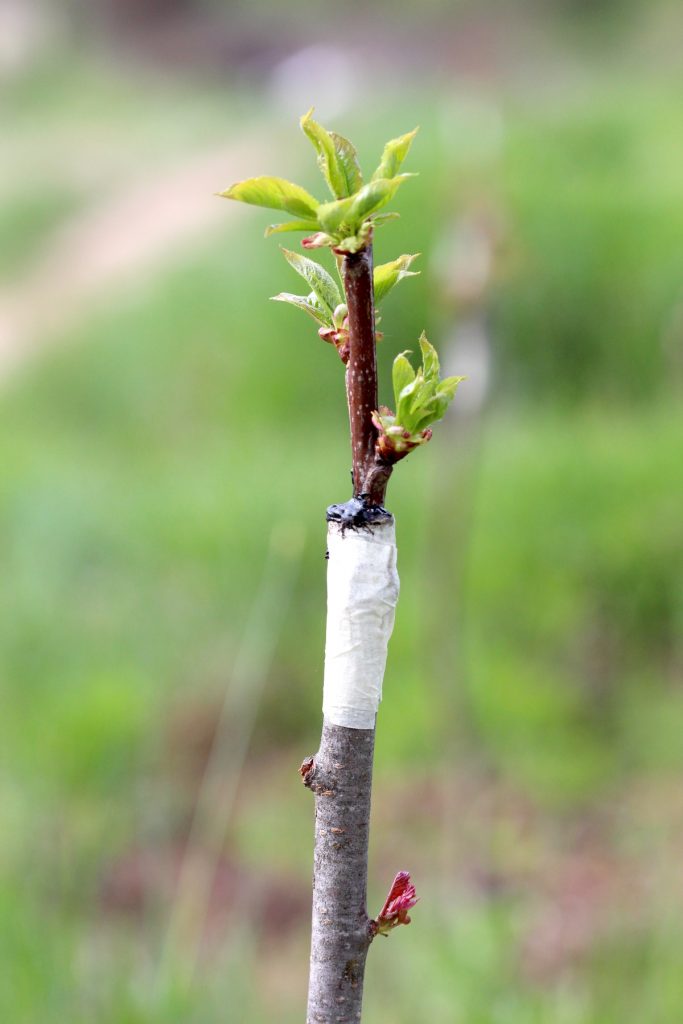
Rootstocks are often $1 to $2 each, and scion wood can be collected from established trees or bought in bulk cheaply. It takes time to grow a tree out to a sale-able size, but each pot doesn’t take much space, and the payoff can be significant.
Fruit trees commonly sell for $35 to $100 each depending on age and variety. That’s a pretty good return for a pot sitting in your yard.
Learning to graft takes practice, but once you’ve got it down, you can graft a lot of trees in a day. For an easier method, a grafting tool can speed things up.
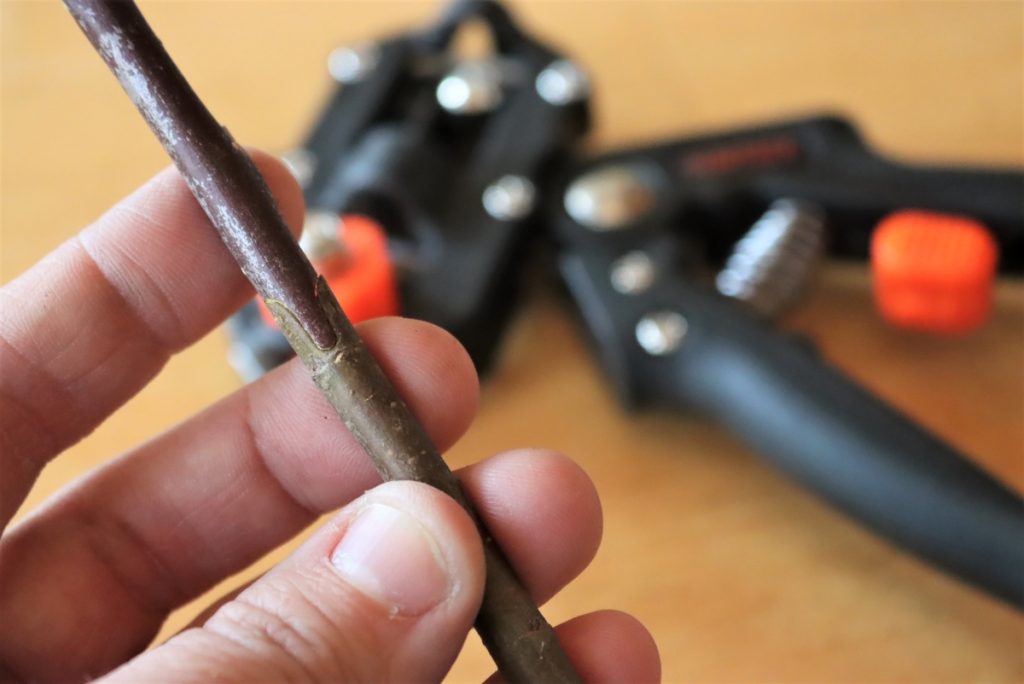
And if grafting is too much, there are quite a few fruits you can propagate from cuttings. Growing elderberries from cuttings is easy, while growing blueberries from cuttings takes a bit more skill.
You just have to find your niche and match your skill level.
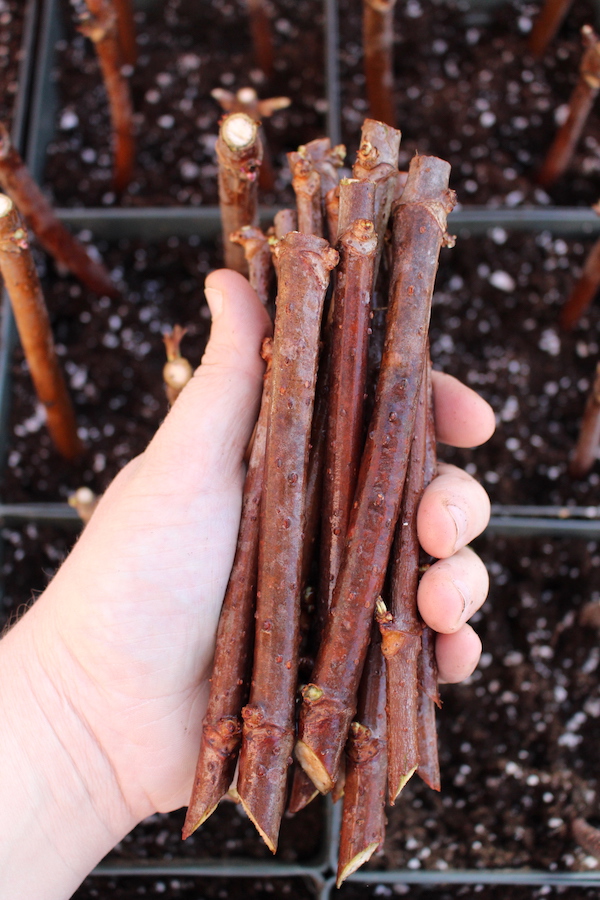
Try reading So You Want to Start a Nursery or Practical Woody Plant Propagation for Nursery Growers to get you started.
Sell homemade Soaps, Salves & Tinctures
Soapmaking can look intimidating from the outside, which is exactly why it can sell so well. Plenty of people want handmade soap, but they’re not ready to work with lye themselves. If you learn how to make cold process soap, you can sell to the crowd that’s still in the “soap dreaming” stage.
The ingredients are usually less expensive than people think. A small amount of lye goes a long way, and once you have basic oils, molds, and a reliable recipe, your cost per bar stays pretty predictable. Add herbal infusions from your own garden, and you’ve got a story and a product people can connect with.
Right now, Tallow Soap is incredibly popular, but it’s hard to find. Making a few batches at home is a great way to standout at the market.
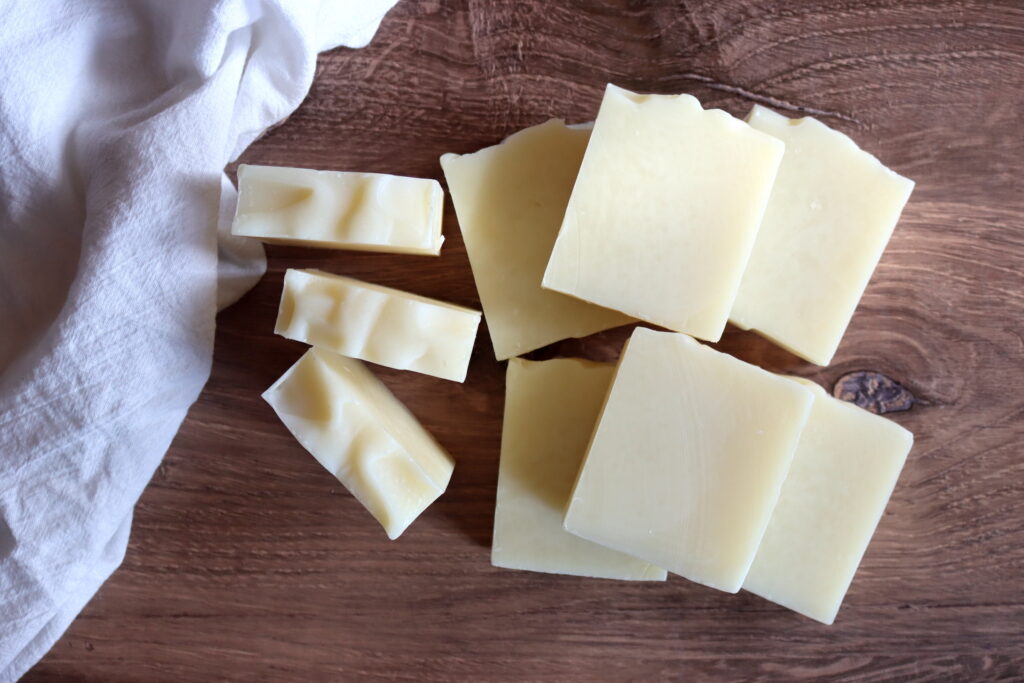
Our local coop sells handmade soaps for about $8 a bar, and online prices are often similar. Once you’re practiced, it’s very realistic to produce enough soap in batches to create steady monthly income.
And believe it or not, you can get started with melt and pour soapmaking recipes, so you don’t even necessarily have to work with lye.
Homemade salves are a good choice too because they’re small, easy to package, and inexpensive to make, but they can be sold for quite a bit. They’re even more profitable when they’re made with homegrown or locally sourced herbs.
The same goes for homemade tinctures. Just a small amount of herbs, plus a bit of alcohol that can be purchased in bulk, can sell for upwards of $15 per ounce!
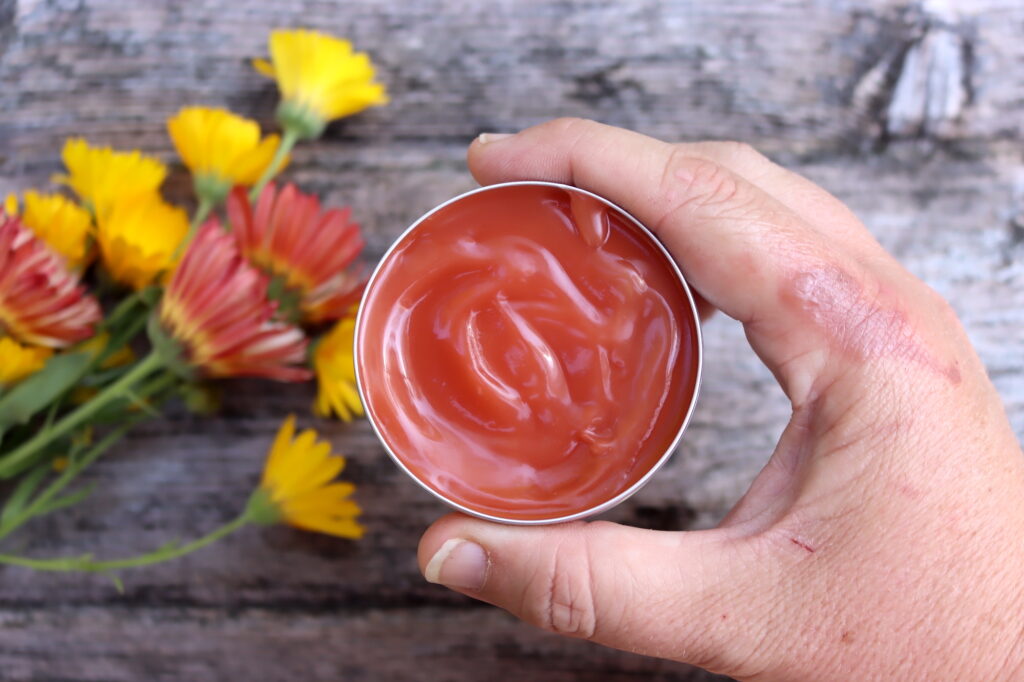
Grow mushrooms
High-demand varieties like shiitake, portabella, and oyster mushrooms can be productive and profitable, and they don’t require a lot of land. Once inoculated, logs can produce for years with minimal tending.
Growing shiitakes is a great outdoor option on hardwood logs. At our local coop, shiitake sell for around $8 to $12 per pound, and you can time production by soaking logs to encourage fruiting when conditions are right.
I still remember our very first homegrown shiitake mushroom. It felt like a small miracle sitting there on the log, and then the logs just kept on fruiting for years!
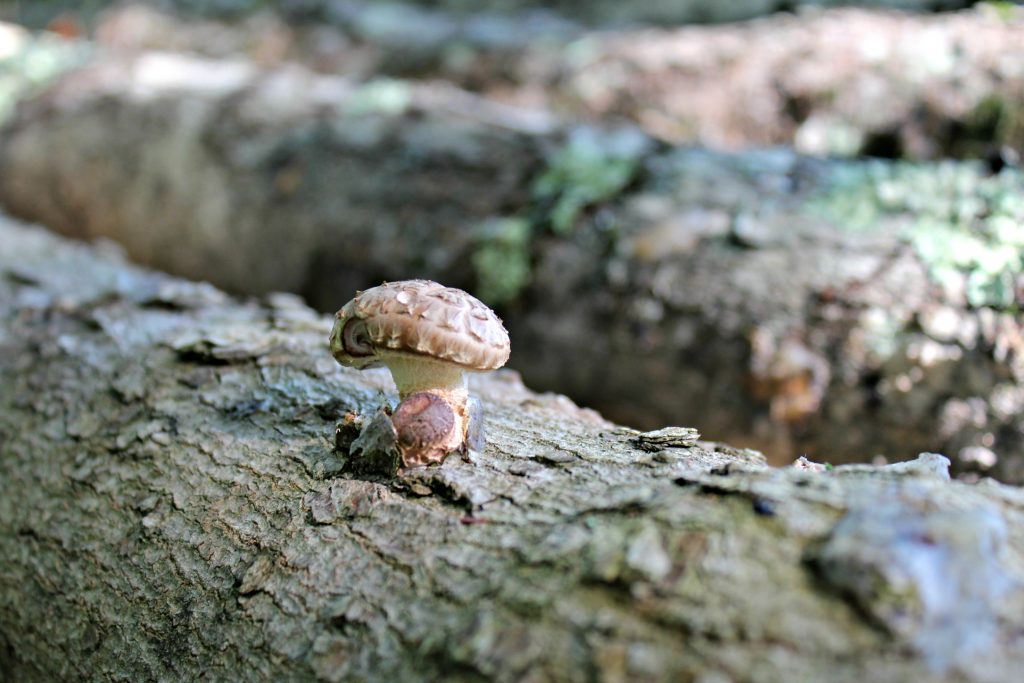
Oysters are even easier in a lot of ways because you can grow them indoors year-round, and they’ll grow on a huge range of substrates: wood chips, straw, coffee grounds, and more. There’s something deeply satisfying about turning free coffee grounds from a local Starbucks into a crop.
You can even grow oyster mushrooms on old jeans, which just goes to show that you can grow them on just about anything!
Oyster mushrooms are also delicate, and that’s part of what makes people willing to pay for them. A local Vermont farm near us packages them in pint clamshell containers, one large fruiting body per clamshell. Those containers sell for about $5 each, and at 3.5 ounces per package, that works out to a surprisingly high per-pound price.
If you want longer shelf life for selling online, preserved mushrooms, either as dried mushrooms or mushroom tinctures can make inventory much easier to manage. For medicinal products, reishi tincture is a common place people start. Chaga tincture works too, but you’ll have to forage those mushrooms.
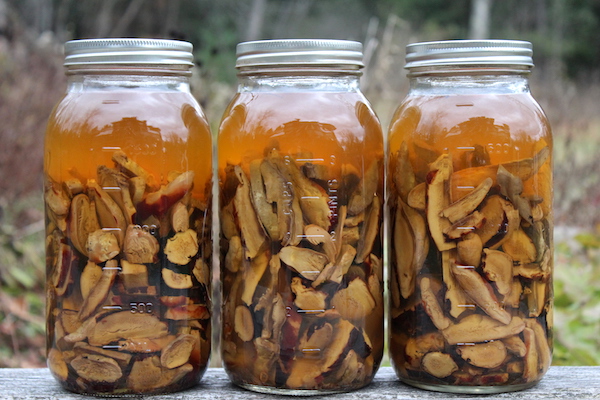
For our own mushroom farming, we found the book Organic Mushroom Farming and Mycoremediation to be our best resource. It’s a great how-to for all things mushroom farming and includes a lot of information on making your operation profitable.
Sell foraged or wildcrafted edibles and medicinals
You don’t need a lot of land to forage for profit. You need knowledge, a careful eye, and access to clean harvesting areas. If you do it responsibly and legally, it’s one of the few “work” activities that feels like getting paid to take a walk in the woods.
Wild mushrooms often sell out quickly at farmers markets, even at premium prices. Identification takes time to learn, so start with easy to identify beginner mushrooms, namely species that are distinctive and well-known, and never sell anything you cannot identify with complete confidence.
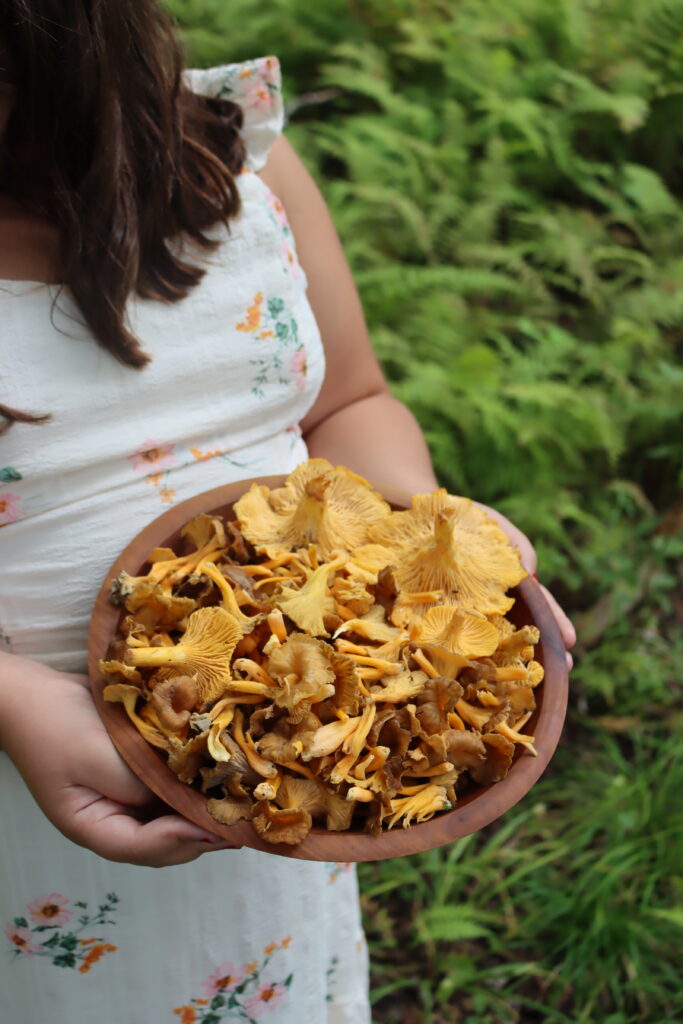
Foraging doesn’t have to be rare or difficult to be profitable, either. I’ve seen bundles of dandelion greens at the supermarket and thought, my lawn’s worth millions.
Once you’re comfortable, teaching foraging classes or doing backyard plant walks can become its own income stream. You’re helping other people learn self-reliance while getting paid for your expertise.
Start small, with your own backyard homestead. I’d highly recommend reading Backyard Foraging as a first resource.
If you learn well from courses, the herbal academy has a wildcrafting course to get you started.
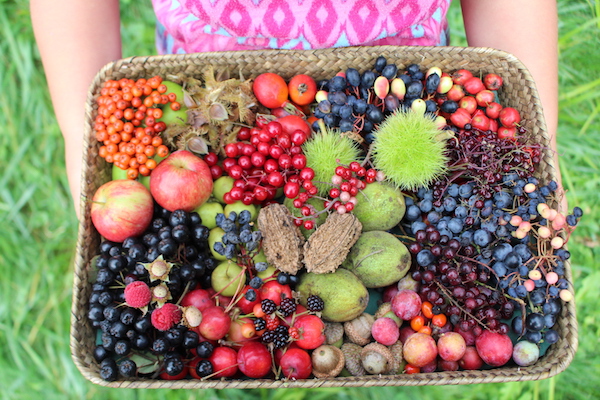
Grow medicinal herbs (and make high-value products)
Vegetable CSAs can be popular, but the profit margin on lettuce is thin, and many markets are saturated. Herbs are different. Locally grown medicinal and culinary herbs can be surprisingly hard to find, and the plants themselves are often vigorous.
A lot of herbs contain compounds that act as natural defenses, which means they can be less appealing to pests and deer. While pests and deer destroyed our lettuce, nothing touched our sage, bee balm, or valerian. Every year they reseed and spread no matter how much we harvest. Herbs are good like that: persistent, productive, and profitable.
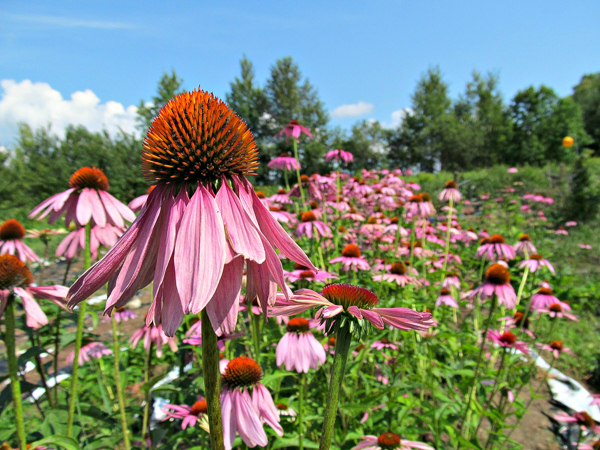
Value-added products are where herb income can really take off.
Tinctures, as I mentioned earlier, are convenient and shelf-stable, and people are willing to pay for that. Our local coop has half an aisle dedicated to tinctures. It’s not unusual to see tinctures selling for $15 an ounce, while the ingredient cost can be much lower, especially if you’re growing or wild-harvesting the herbs yourself. Add the bottle and labeling, and the margin can still be strong.
If you want a simple place to start, echinacea tincture and elderberry tincture are classic, in-demand options.
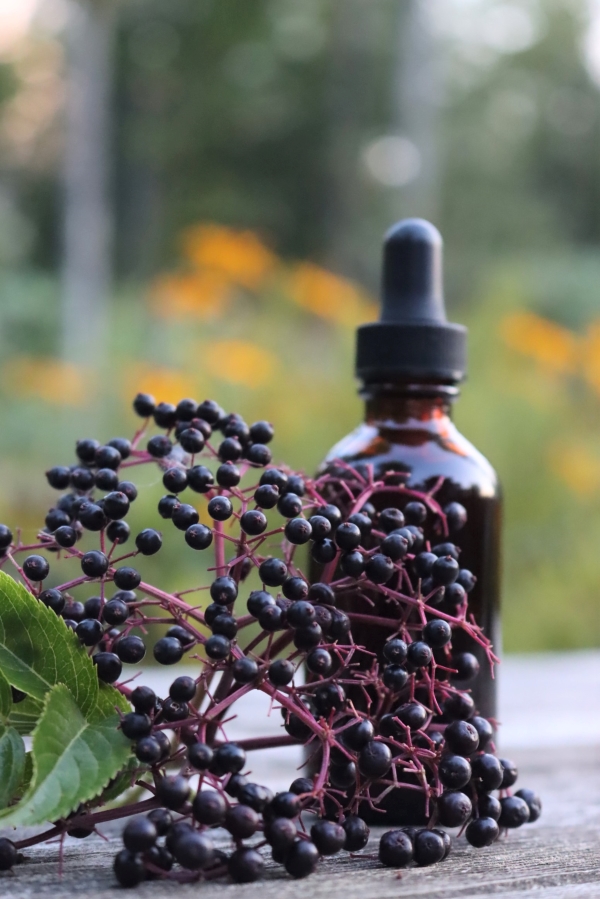
As you’re just getting started, I’d recommend Backyard Medicine as a way to dip your toe into harvesting and making your own herbal remedies, especially from wild crops.
If you’re considering growing herbs for profit I’d highly recommend The Organic Medicinal Herb Farmer: The Ultimate Guide to Producing High-Quality Herbs on a Market Scale. It’s written by farmers that grow just a few towns over from us, and they’ve inspired a lot of people to take up growing medicine for the market.
The Herbal Academy of New England also has a course designed specifically for herbal entrepreneurs. The course walks you through the basics of creating your own brand identity, marketing, sourcing herbal ingredients, manufacturing herbal remedies and creating a business plan around herbs and herbal remedies.
If you’re just getting started with herbs, and want to bolster your own education well before you commit to anything as ambitious as starting your own herbal business, they also have a number of other courses including:
- Herbal Materia Medica Course: Designed to spark your excitement for herbal studies and help you develop your own materia medica.
- Introductory Herbalist Course: A self-study course for students with little or no herbal experience.
Final Thoughts
Making $1,000 a month on a homestead is absolutely doable, but it rarely happens by dabbling. Pick the one idea that fits your season of life right now, do the math, and build a system you can repeat without burning out.
For me, the best homestead income streams have always been the ones that support the life I’m trying to live, not the ones that turn my homestead into a packed schedule and a second full-time job.
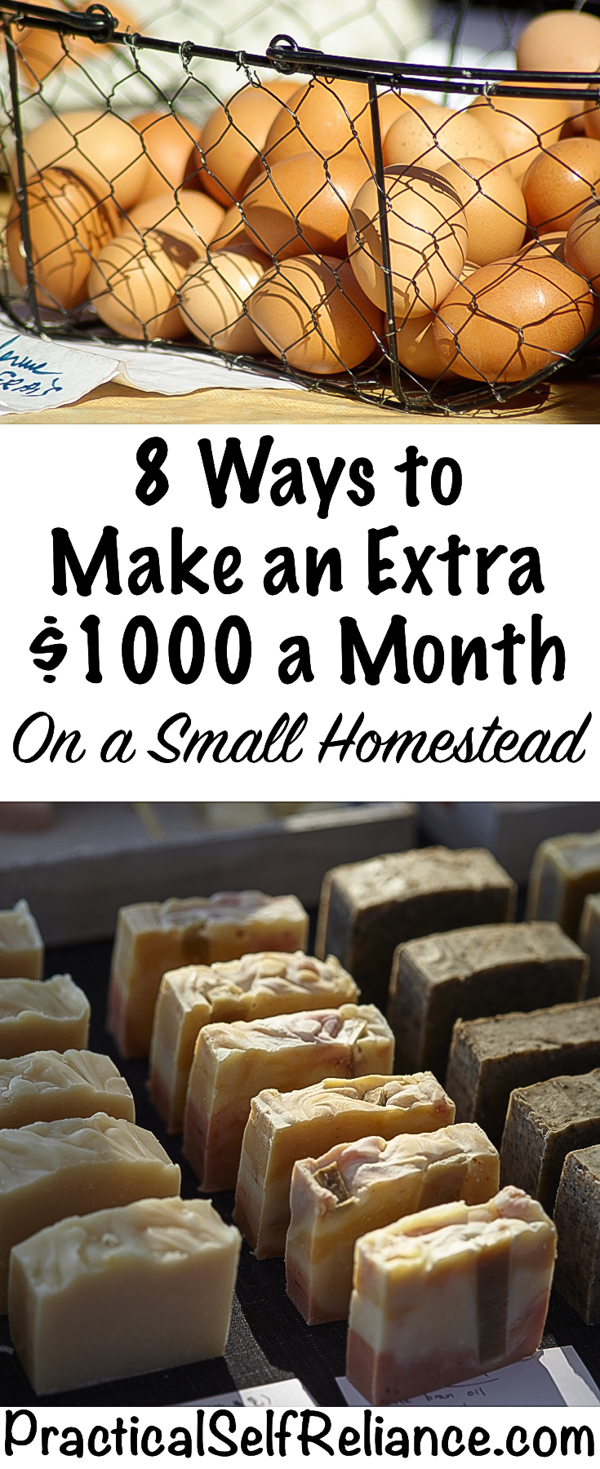
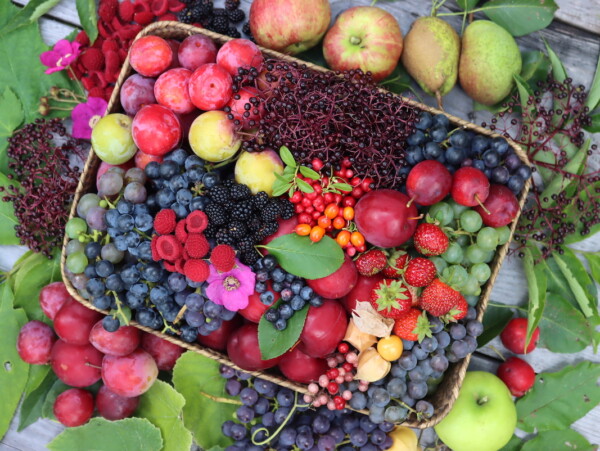
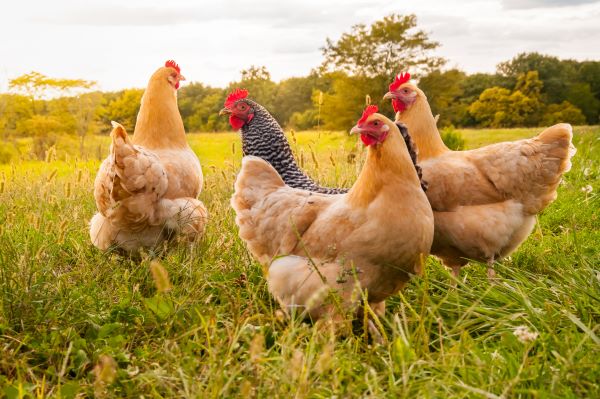
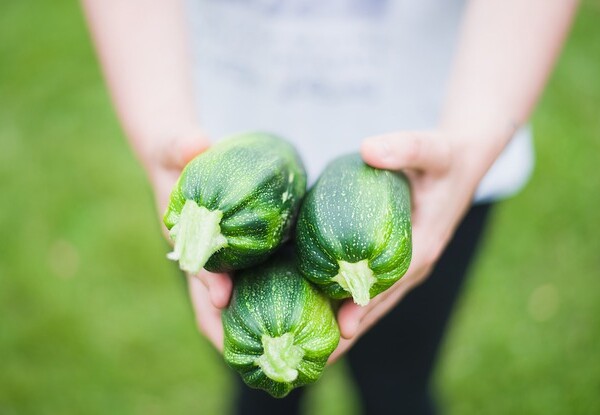
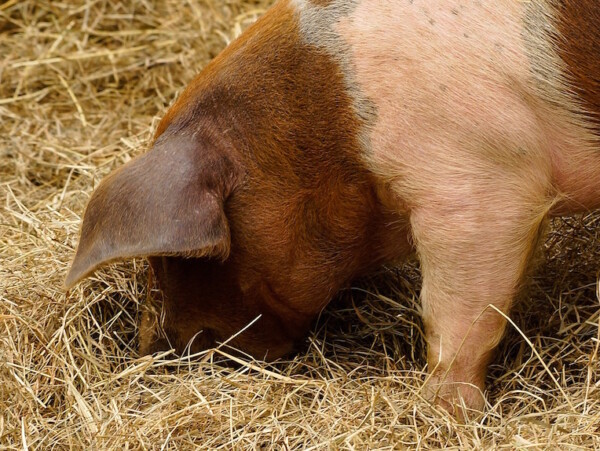
I really enjoyed your tips. I tried selling tincture but I could only find a buyer willing to pay $3 a bottle. Who do you sell to?
It’s just like with any business, you need to find the people that want what you’re offering and recognize the value of the product. It’s also important to have basic marketing skills so that you can effectively communicate and educate your potential customers about the benefits of your product.
I love this post! So many great tips. I am interested in starting a blog myself and I am interested in the course you mentioned above. I hate to ask this but have been scammed too many times. Is the course actually worth the investment? Has anyone taken it? I’m tired of trying to figure things out on my own but I can’t afford to invest in something else not worth while. Anyone else know what I’m talking about?
We definitely think it’s worth the investment. If this is something that you feel drawn to, then I would just go explore around the website a little bit. Check out the information on the course and take advantage of the free training that is available to get started and then make your decision. I am sure that she will be happy to answer any questions that you might have regarding the course.
This is one of the best articles of its kind. To the point with a few things that are right on topic. You’ve done your homework to give credit where credit is due and to help people find the resources to help them in their endeavors. Plus you have obviously spell checked or had someone else take a look. I find some blogs are just too lengthy and maybe people really get in over their heads with all they want to say. Then they overlook spelling, grammar and proper sentence structure. I know that sounds petty, but it’s just something I always notice. I’ve been told maybe I should be a proofreader, however, my fear is having to proofread an owner’s manual, or instruction guide. Boring content leads to sleep for me. I can see why you are able to make money doing this. Seems you were born for it. Thanks!
Thank you so much.
Thanks for all the great ideas and resources! I recently took a class at a local ag college about making a profit from the animals you raise and value added process. I currently make my own goat milk soap. As I get older, I am not looking forward to working in a traditional setting with restrictive schedules and having these other avenues for making money even if seasonal is very enticing.
Hello, just a few more things could be Jellies and jams, flowers for herbal teas, bee keeping(Honey) and Syrups(maple) are a few other ways! If you can get out and about cleaning neighbors outbuilding for their unwanted items and sell, I had a coworker do this to sell on ebay and now she does it full time.
Awesome suggestions, there’s no better than earning some extra income from the comforts of home. These are such creative suggestions.
I am so thankful to have come across this blog. I have 3 children which I am parenting and supporting completely alone. I have done some of the things suggested in this blog but you have some great new idea’s that I had never thought of. I look forward to putting some of these idea’s into action. Thank you!
This article was really informative, thank you for writing it! I think it’s all I needed to light a fire under myself again… I’ve been turning my 2 acres into a farm that supports my food cart in Portland, Or.
I enjoyed and learned a lot from this blog. Thank you. I have a question. In your opinion whiich of the mentioned or suggested types of Income on Homestead would generate The most amount of income for the least amount of time involved?
Thanks,
Hey Lisa, good question. Right now I make my full-time income from this blog, in about 2 hours of computer time a day. It takes a while to build up an audience, but for me, that’s been the most profitable by far. Selling hatching eggs wouldn’t require that much time, but you’d need chickens and to develop a market. If you already tend chickens and have that infrastructure, it’d be easy to begin selling hatching eggs and that would be the quickest setup time of all the choices. The worst on there, time to income-wise, is selling baked goods at farmer’s markets. It’s fun, but very time-consuming.
Hi, your article was just what I needed tonight. I have the land ( both woods and field), space, time and even many of the plants and a root cellar. They were all here when I bought this place to take care of my sick father 8 years ago. He recently passed away and I’m left scrambling for ideas to support me and my 13 year old homeschooler. Where to start is so overwhelming. And I don’t know that I have anything to share on a blog. Where would you sell, or to whom would you sell, the items you have written about? So glad I found you! Blessings!
Hi Ashley,
great blog, love it,
thinking about doing mushrooms, i am in British Columbia Canada.
what would be the best way to start? what to read? what to watch?
I’ve read your above blog, it is awesome,
your advise on the subject would be appreciated.
thanking you in advance,
khalil alqutub
By far, the best mushroom growing reference I’ve ever read is by Organic Mushroom Farming and Mycoremediation by Tradd Cotter. I’ve put a link to the book above under the supplies needed section. He covers everything you need to know from both a technical perspective and a layman’s perspective, so you can take away as much detail as you’d like, but either way you still have all the information you need to get it done.
I found it really helpful to start with something like an oyster mushroom kit. You can watch the stages of mushroom formation and get a feel for the whole process. Generally, the cost of a kit works out to be about the same as the cost of buying about as many mushrooms as a kit produces, so it’s a break-even proposition, but a good learning experience. Here’s some information on growing with an oyster mushroom kit: https://practicalselfreliance.com/growing-oyster-mushrooms-kit/
Ashley, I have read with great interest this entire article.
The blogging aspect interests me but I have one question. I guess I don’t understand how blogging can generate an income.
Are you selling something on a blog or are you just chatting about something you enjoy and want to share with others through communication on that blog?
All blogs that I have seen are just about sharing a passion for something.
Thank you for your time in answering.
Nancy
Hey Nancy, great question. I started this blog originally as a creative outlet, and as a way to teach others what I’d learned puttering around the yard with my young children, mostly foraging and gardening. Now it’s my full-time income.
There are a lot of ways to generate income from a blog without selling anything. I mostly blog about DIY and saving money, and I hate selling stuff, so that’s not a good fit for me.
Wouldn’t you also have to get a food handler’s license? I don’t know the cost, but I think
It really depends on your state. Some states don’t require any type of certification until you’re netting $6k or more a year, and even at an extra $1000 a month in the summer you’d be just under that. You should know your local restrictions before you start though.
Hi, I live in Florida, and the requirements are so restrictive here, that I gave up on the idea of selling baked goods or homemade candies at craft shows or farmer’s markets! I hope other states are easier to work with. We are planning a move to Tennessee, hoping to start a mini-homestead there. I’m so excited to try out chickens, bees, and who knows what else! I love your blog, thanks for providing so much great information.
You’re welcome. We’re so glad you are enjoying the blog.
I would like to make soap and I’m a book person. Is there a reference other than e-books? When the power goes out I want a book to hold in my hands. Thanks, love your post.
Hi Ray, Good question, and you’re definitly not the only one. I’ve updated the post to include my recommendation for my favorite paperback soapmaking book: The Natural Soap Making Book by Kelly Cable. I wrote a full review, including a recipe for honey and goats milk soap straight from the book here:
https://practicalselfreliance.com/goats-milk-honey-soap-recipe-beginners/